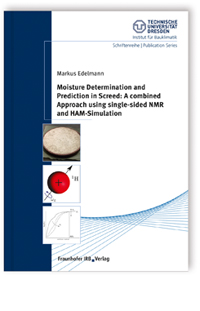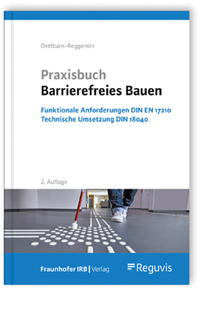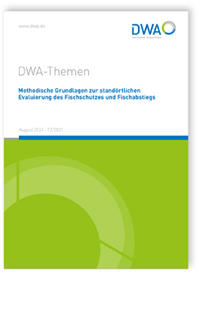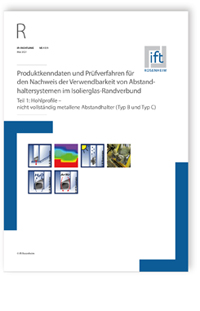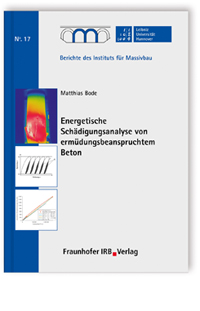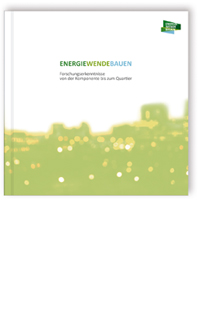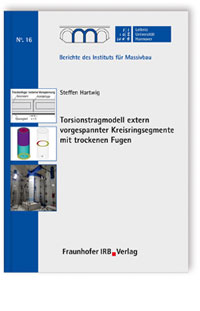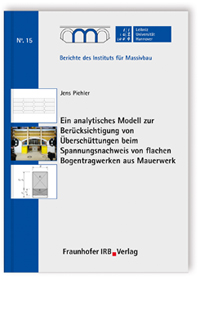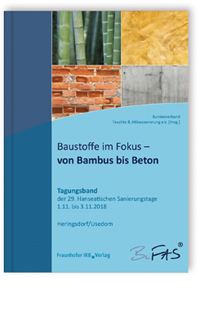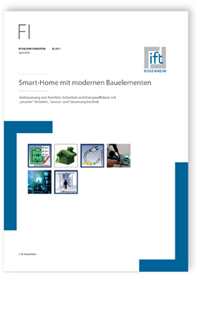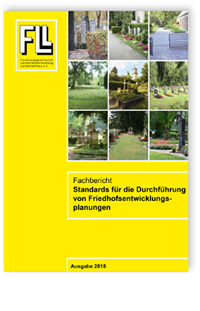Moisture Determination and Prediction in Screed: A combined Approach using single-sided NMR and HAM-Simulation (Softcover)
Details zur Dissertation
Autor
Markus Edelmann
Erscheinungsjahr
2020
Herausgeber
Technische Universität Dresden Zentrum für Bauforschung
Bibliografische Angaben
190 Seiten, zahlr. Abb. u. Tab.
Softcover
Fraunhofer IRB Verlag
ISBN 9783738805475
Sprache
Englisch
Feuchtigkeit und feuchtebezogene Prozesse sind die Hauptursachen für Schäden an Baustoffen und Infrastruktur. Daher ist eine Bestimmung des Feuchtegehalts von großer Wichtigkeit. Diese Arbeit präsentiert eine Methode zur präzisen, zerstörungsfreien Bestimmung von Feuchtigkeit mit Magnetresonanz (NMR) in Aufsatztechnik. Es wird ein Verfahren zur Ableitung einer verallgemeinerten Korrelationsfunktion entwickelt, die nicht nur die Anfangsamplitude, sondern auch den Relaxationszerfall mit dem Feuchtegehalt verknüpft.
Weiterhin wird am Beispiel unterschiedlicher Estriche gezeigt, dass unter Zuhilfenahme moderner Simulationsmodelle das Abtrocknungsverhalten quantitativ simuliert und für die Zukunft vorhergesagt werden kann. Auf Basis dieser Ergebnisse kann beispielsweise der Zeitpunkt der Belegereife frühzeitig vorausgesagt werden, was eine bessere Planung von Bauprojekten ermöglicht.
Weiterhin wird am Beispiel unterschiedlicher Estriche gezeigt, dass unter Zuhilfenahme moderner Simulationsmodelle das Abtrocknungsverhalten quantitativ simuliert und für die Zukunft vorhergesagt werden kann. Auf Basis dieser Ergebnisse kann beispielsweise der Zeitpunkt der Belegereife frühzeitig vorausgesagt werden, was eine bessere Planung von Bauprojekten ermöglicht.
- Introduction and Objectives
- Overview of Moisture Measurement in Building Materials
-
- Definition of Moisture
- Critical Review: Readiness for Flooring
- Common Moisture Measuring Methods
- Introduction to Nuclear Magnetic Resonance
-
- Phenomenological Description
- Spin and Magnetic Moment
- Magnetisation and Magnetisation Dynamics
- Relaxation and Bloch Equation
- Signal Acquisition and Pulse Sequences
- Relaxation in Porous Media
- Single-Sided NMR
- Materials, Equipment and Methods
-
- Tested Materials and Preparation
- Single-sided NMR Measurements
- T2 Distribution and Inverse Laplace Transformation
- Reference Moisture Content
- Development of a generalised NMR-Moisture Correlation Model
-
- Derivation of the NMR-Moisture Correlation
- Effect of Inhomogeneous Moisture Distribution
- Diffusion
- Results and Discussion
- Robustness regarding Regularisation
- Hydration
- Summary and Conclusions
- Moisture Prediction
-
- Introduction
- Introduction to Coupled Heat, Air and Moisture Simulation
- Development of a Real Time Calibration Procedure
- Validation of the Method
- Boundary Conditions
- Summary and Conclusions
- Material Characterisation
-
- Pore Model and Moisture Storage Function
- Material Characterisation by NMR Porosimetry
- Summary and Conclusions
- Summary and Outlook
- List of Symbols
- References
-
- A DELPH N Project File used for Minimization
- B Hydration Correction
- C Mercury ntrusion Porosimetry vs NMR Porosimetry
- D Error Estimation of Predicted Drying Curves
- E Initial Materials
